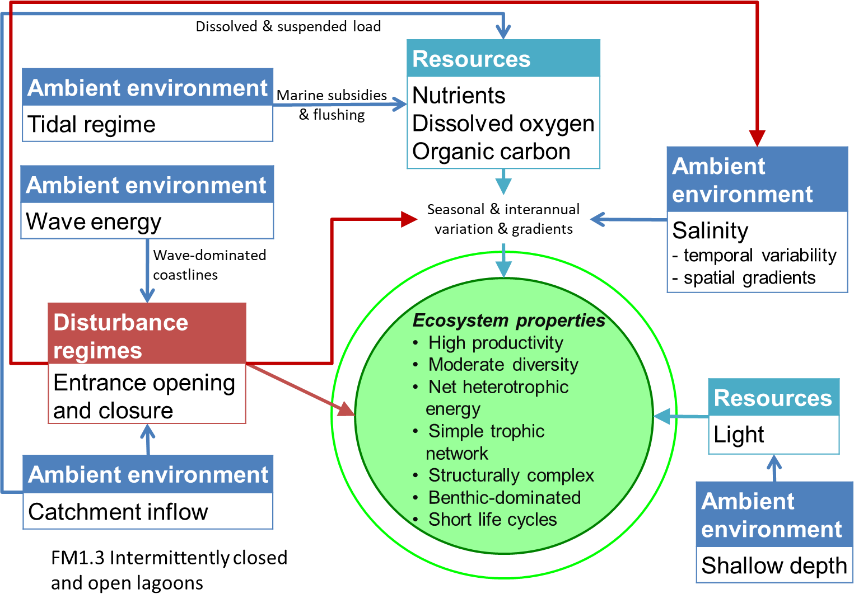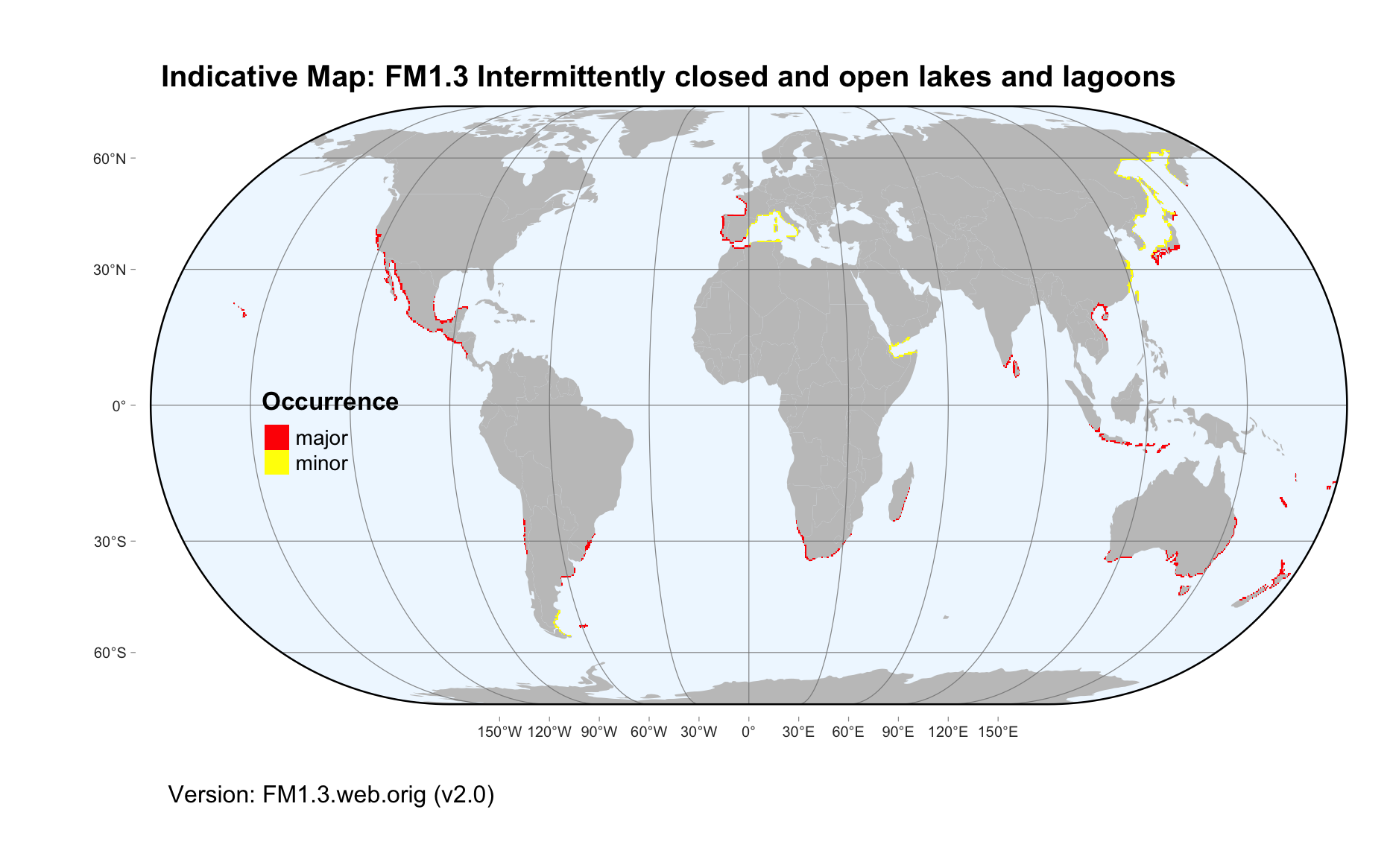Global ecosystem typology
Alternative site for the Global ecosystem typology with additional information for ecosystem profiles and indicative maps.
This site is maintained by jrfep
FM1.3 Intermittently closed and open lakes and lagoons
Biome: FM1. Semi-confined transitional waters biome
Contributors:
(texts)
Opportunistic, short-lived organisms live in these ecosystems, where conditions change rapidly as lagoon entrances to the open ocean open or close. Periodic opening and closure influences dynamic gradients in salinity, nutrients, temperature, and water level. Algae, invertebrates like shrimps, and small fish rely on nutrients from land and, when open, the sea. Timing of opening or closing depends on transport of sand and mud by currents or freshwater inflow, or on anthropogenic processes.
Key Features
Shallow water systems, highly variability depending on opening or closing of lagoonal entrance. Detritus-based foodwebs with plankton, invertebrates and small fish..
Overview of distribution
Wave-dominated coastlines globally.
Profile versions
- v1.0 (2020-01-20): MJ Bishop; DA Keith
- v2.0 (2020-06-17): MJ Bishop; SL McSweeney; RJ Woodland; KA Dafforn; DA Keith
- v2.01 ():
- v2.1 (2022-04-06): MJ Bishop; SL McSweeney; RJ Woodland; KA Dafforn; DA Keith Full profile available at official site
Main references
Selected references for this functional group:
McSweeney SL, Kennedy DM, Rutherfurd ID, Stout JC (2017) Intermittently Closed/Open Lakes and Lagoons: Their global distribution and boundary conditions Geomorphology 292:142-52
Maher W, Mikac KM, Foster S, Spooner D, Williams D (2011) Form and functioning of micro size Intermittent Closed Open Lake Lagoons (ICOLLs) in NSW, Australia Lagoons: Biology, management and environmental impact Friedman AG (ed). Nova Science Publisher. New York
Diagrammatic assembly model

Maps
Maps are indicative of global distribution patterns are not intended to represent fine-scale patterns. The maps show areas of the world containing major (coloured red) or minor occurrences (coloured yellow) of each ecosystem functional group. See general notes on maps.
There are 2 alternative versions of the indicative map for this functional group, please compare description and sources below.
FM1.3.IM.orig_v2.0
Datasets
- SRTM30-PLUS-V11
- MEOW-2008
Map references
Becker JJ, Sandwell DT, Smith WHF, Braud J, Binder B, Depner J, Fabre D, Factor J, Ingalls S, Kim S-H, Ladner R, Marks K, Nelson S, Pharaoh A, Trimmer R, Von Rosenberg J, Wallace G, Weatherall P (2009) Global Bathymetry and Elevation Data at 30 Arc Seconds Resolution: SRTM30_PLUS, Marine Geodesy 32: 355-371. DOI:10.1080/01490410903297766
Spalding MD, Fox HE, Allen GR, Davidson N, Ferdaña ZA, Finlayson M, Halpern BS, Jorge MA, Lombana A, Lourie SA, Martin KD, McManus E, Molnar J, Recchia CA, Robertson J (2007) Marine ecoregions of the world: a bioregionalization of coastal and shelf areas. Bioscience 57: 573–583. DOI:10.1641/B570707
FM1.3.web.orig_v2.0

Datasets
- MEOW-2008
Map references
Spalding MD, Fox HE, Allen GR, Davidson N, Ferdaña ZA, Finlayson M, Halpern BS, Jorge MA, Lombana A, Lourie SA, Martin KD, McManus E, Molnar J, Recchia CA, Robertson J (2007) Marine ecoregions of the world: a bioregionalization of coastal and shelf areas. Bioscience 57: 573–583. DOI:10.1641/B570707
Check: the Glossary / Profile structure / the public document